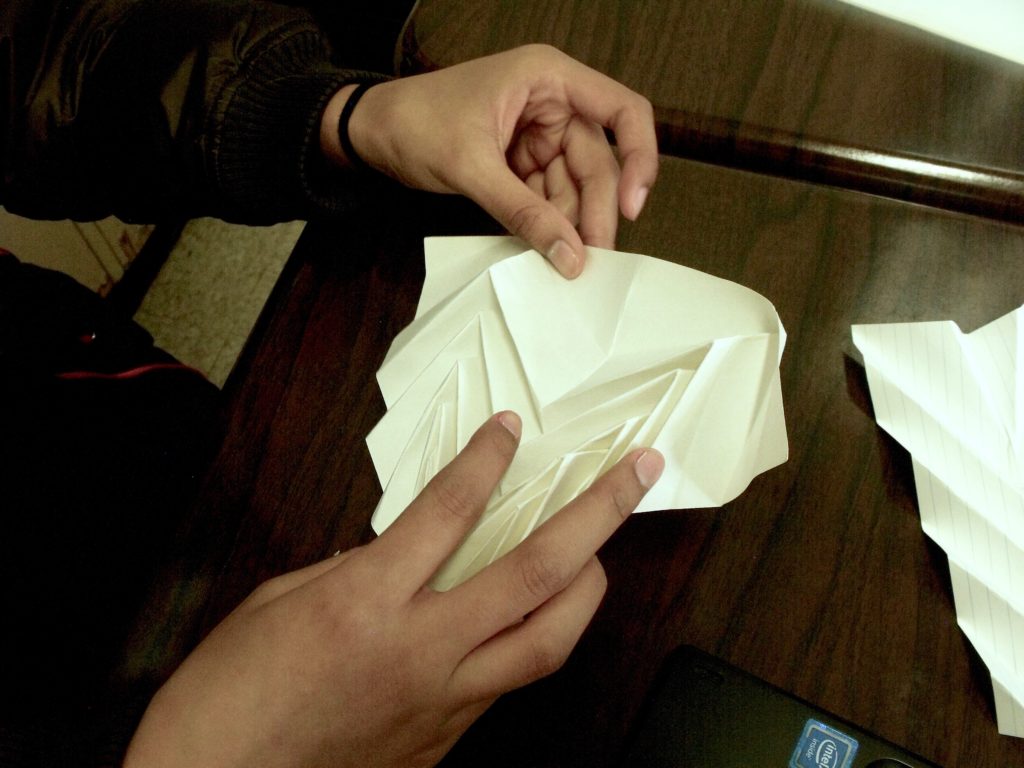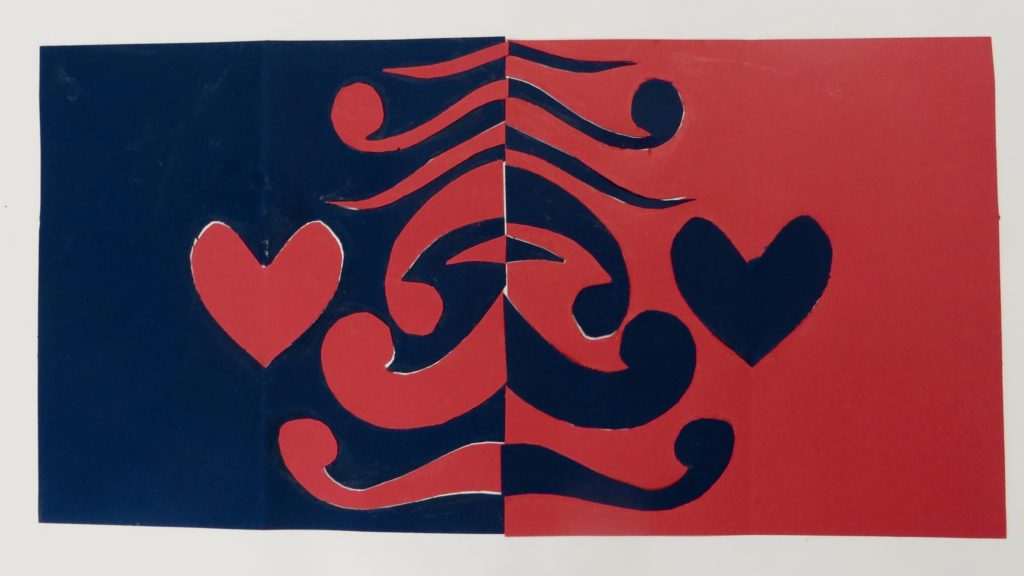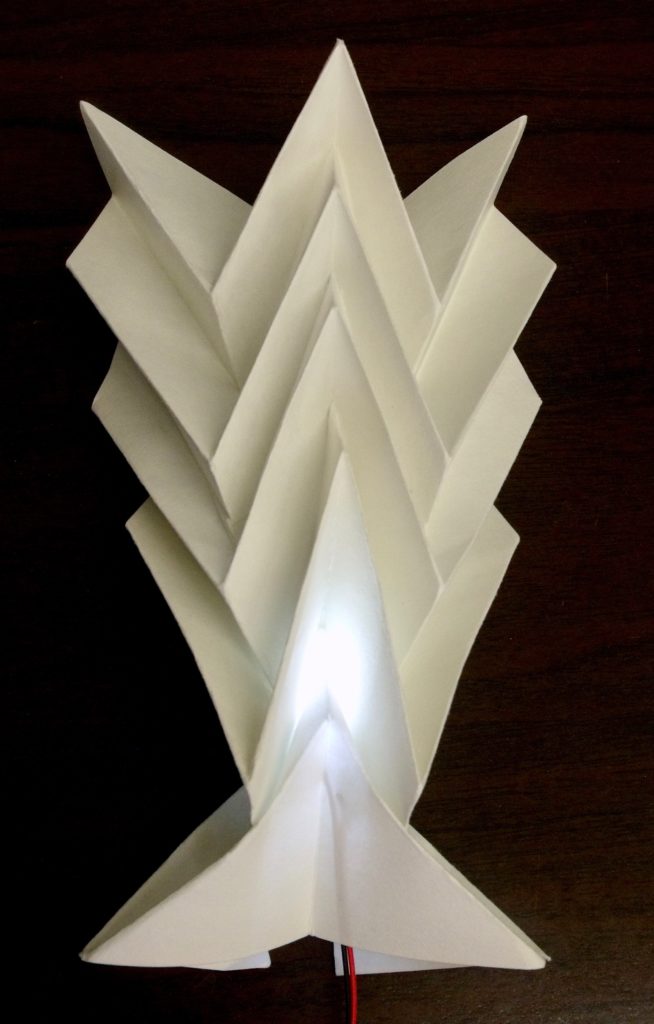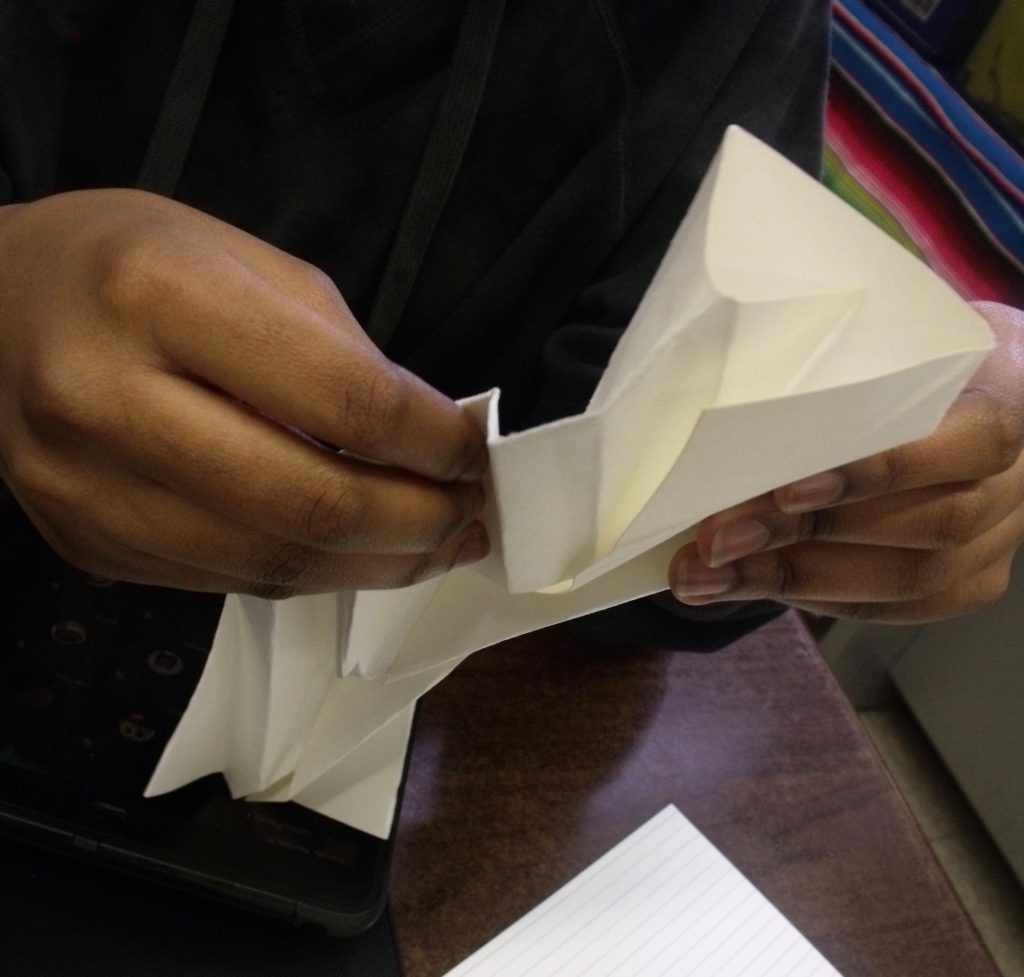
At WHSAD, students are exposed to various activities which are often integrated into classes.
Among the activities that students have been participating in recently is origami with Make: STEAM educator, Kate Yourke. Beginning on May 6th, this activity was included in the daily schedule as Ms. Yourke collaborated with students to create pieces and teach design applications. In order to realize the work students produced, Ms. Yourke taught a 4-class curriculum organized by aspects of origami.
To view North Brooklyn Community News’ article on the event, click here
During Class 1, students were introduced to Yin and Yang, a Chinese philosophy that complete opposites hold a position to balance each other out, even when not being generally connected. During this first-class students were introduced to symmetry and opposition in artwork, as well as Notan, a Japanese design principle used by artists that creates unique designs by combining negative and positive space. Along with this, students were encouraged to create their own Notan Design using paper or through Google Draw.
During class 2, students explored the origins of paper, as well as cut and reverse folding patterns. Patterns such as the valley and mountain folds are illustrated to permit movement while preventing wrinkling or distortion of the paper between the folds.

Class 3 tackled biomimicry- the creation of products that are designed based on processes and creatures found in nature. Furthermore, the use of origami in engineering was briefly described, with students learning how the Starshade and Miura-ori fold were constructed using origami. A major focus of this class was tessellations or repeating patterns of shapes. These patterns are often found in design but can be found in everyday objects, as well.
Cases of origami being used in various methods are further expanded on in the following examples. Among the various ways of utilizing origami, researchers at the University of Oxford used origami to develop a biocompatible aortic heart stent that could be inserted into the artery and then expanded to improve flow. Another example of origami is its ability to produce highly effective energy-absorbing structures by using creases to control deformation.
Class 4 allowed students to create and submit developed miura-fold origami pieces.
Students created multiple pieces of Notan Design origami as well as Miura-fold pieces during this four-day activity. Student work is an active showcase of all they’ve learned and taken away from the event. In addition, students provided feedback on their experience and what they learned.

Jennifer Segundo Ramirez
We had an origami class in Ms. Sabic’s room led by Ms. Yourke. Her origami classes were spectacular. On the first day, we were shown how to do many different cuts in a small paper. We should glue it to the opposite side. When everything was glued down, it looked very cool. The next day, we did a lot of folding. We started with the little index, large index, and paper. We had to fold the paper in half and make it into a v shape. Open the paper and according to the pattern, there is a pattern that is mountain and valley. Mountain means the first V that will pop out and valley means it goes inside.
When I did origami, it was hard at first but mostly the second day was the hardest. The folding and getting the pattern in the V and making sure the pattern kept going. This took me many tries to do. I didn’t know how to get it right on the first try, so I kept practicing after school. Therefore, when we had the final project it would be easier and faster. So origami isn’t something easy and you should have a lot of patience because you will not know right away how to do it correctly. It takes time and many tries and practice. It was so hard for me because I felt like I couldn’t do it and wanted to give up. But Ms. Yourke kept telling us to not give up and to keep trying because it isn’t something that you will be able to do so quickly, it takes patience. She even told us, it would sometimes get hard at first when you don’t have any practice in it but when you practice over and over, you start to get the hang of it. It wasn’t easy for her at first either. So we should have a lot of patience and don’t give up, no matter how hard it is. With the more practice you get, it gets easy.
Julian Agosto
I was a part of the origami lessons with Ms. Yourke and to be honest it was pretty fun to do. It gave me time to have my eyes off the screen and do something physical for a change. It taught me a lot about how paper works and how architects see things. Even though I wasn’t too good at origami, Ms. Yourke helped me through it, and it was pretty cool to look at. Doing origami with Ms. Yorke gave me a chance to socialize with my other classmates. There were different types of illusions that I could do for hours if I just got good at it. Overall it was a good experience and I would totally recommend doing it.
Alfredo Cuenca Valle
The thing that I have learned from doing origami is that it is really fun to do and you can find a way to make something amazing. You get creative with a piece of paper. Many colors can be used with this origami. Many different shapes can be done as well. It can help you relax as well and de-stress. It’s something you can do everything and you can try for yourself.
Jarely Flores

Origami was invented by the Japanese about a thousand years ago. Origami, also called paper folding, is the art of folding objects out of paper to create both two-dimensional and three-dimensional subjects. It’s made with paper folding, which is an art form from Japanese culture. What l learned from doing origami is to be aware of what is happening in the moment and focus, developing abilities and skills such as coordination, perspective (eyesight ), and patience. Once you get the hang of learning origami, it can be a healthy benefit and a hobby for people. Origami is a peaceful and calming way to help you relax. Doing origami can be difficult/stressful because looking at a structure for paper can look easy but once you do it with your hands and trying to get it right it’s hard. It will take time for people to get used to it or maybe it can be easy for others. JUST REMEMBER DON’T GIVE UP . When l do Origami with paper it is hard but once you ask for help or maybe look at the way and movements they do, it will get easier.
As an intro to positive / negative space in design, I folded the paper into a mountain fold to make it straight and equal at the end of the paper. Then I did two equal cuts on the paper where you folded the paper, to make a big box. Once l cut the two strips with scissors, I had to fold and unfold in order to make it a box. After doing that I pushed it to the negative side which is inside of the paper. The positive side is outside. Then on the negative side, you will see the shape of a box. You can do another box on top of the first box but l stress but it didn’t look the same as how the teacher did it the first time. I kept trying because I didn’t give up. the second time l forgot to do it so it stressed me out again. I didn’t want to waste time making a second box on top of the other box, so I decided why not make a big box and make it look like it’s getting smaller. To make it look like a pattern. Something I should do next for another project such as this is have patience because it takes time.
